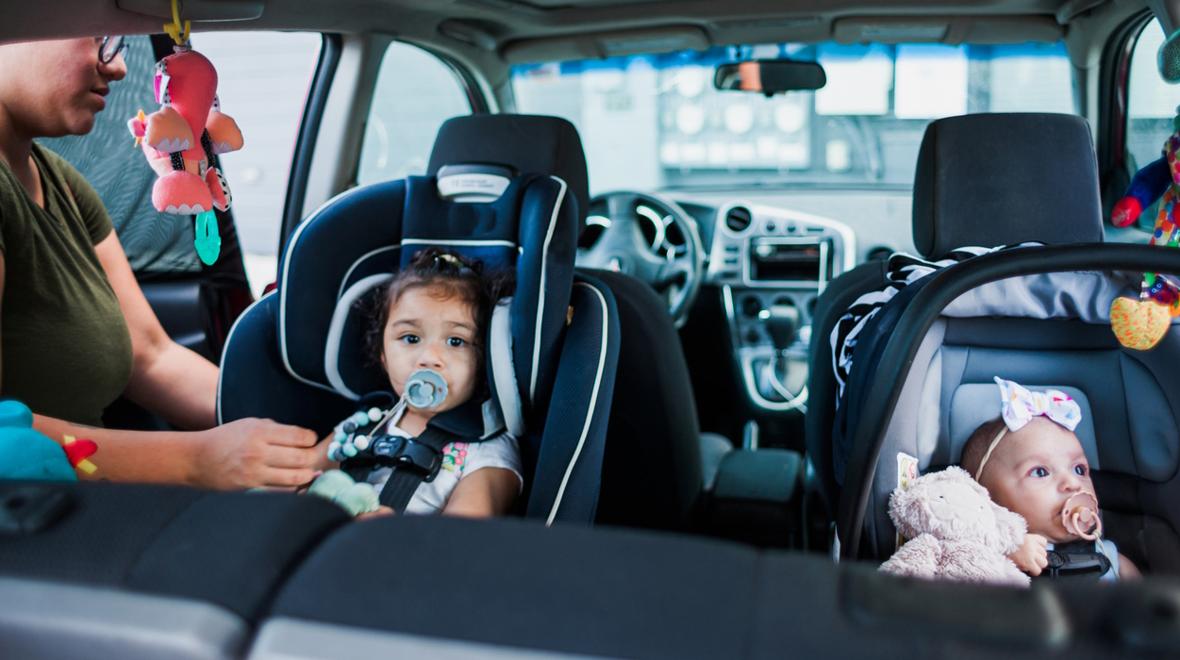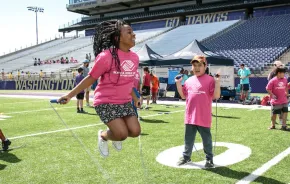
Photo:
iStock
Editor’s note: This article was sponsored by Seattle Children’s Hospital.
At Harborview Medical Center, Dr. Beth Ebel has seen the tragic aftermath of a car crash too often: a smashed and deformed vehicle, and gravely injured occupants. But, when the paramedics bring in a child who was strapped into the car seat, it’s a completely different story.
“Pictures of the car look terrible, but the child looks perfect,” says Ebel, a faculty member at Seattle Children’s Hospital and Professor of Pediatrics at the University of Washington. “It feels like they were wrapped up by an angel.”
While most people understand the lifesaving benefits of car seats, too often parents make an occasional exception, she says. Some families who generally use a car seat may be tempted to bend the rules for a carpool, a ride share to the airport or a quick jaunt in the neighborhood, with dangerous consequences.
Inconsistent car seat use plays roulette with the child’s health, given the overwhelming evidence supporting car seat safety. The use of car seats reduces deaths in car crashes by 71 percent for infants, 54 percent for children ages 1 to 4, and 45 percent for older children in booster seats, according to the National Highway Traffic Safety Administration. For adults and children who have outgrown booster seats, seatbelts themselves are the single biggest safety technology in the history of the automobile, saving hundreds of thousands of lives in the United States. Child seats and seat belts ensure that the child is protected and stays in the right spot so that all the protections built into the vehicle can do their job. Proper car seat and seat belt use is particularly critical given the recent uptick in traffic fatalities nationwide.
“Driving feels safe to us, but in reality it’s risky,” Ebel says. “From road conditions to distracted driving to the driver who gets on the wrong entrance ramp, driving can be the riskiest thing you ever do with your kids. You can’t predict what others will do, but you can keep the children in your car safe with a few simple steps.”
Follow the recommendations — and the law
In Washington, strictly enforced state laws govern children’s car safety practices. Among the specific requirements:
- Children up to age 2 must be properly secured in a rear-facing car seat. Children ages 2 to 4 years old must ride in a car seat with a harness (rear or forward facing).
- Children 4 and older must ride in a car seat or booster seat until they are 4' 9" tall.
- Children who are over 4' 9" in height must be secured by a properly-fitted seat belt.
- Children up to age 13 must ride in the back seat when practical to do so.
In Ebel’s experience there are several common points in which otherwise vigilant parents might stray.
Most families understand that babies belong in rear-facing infant car seats, Ebel says. Occasionally, though, she’s heard from parents who put these in the front seat so they can better see their baby. Infants should never be placed in the front since front airbags deploy at high speeds, into the space where a child’s head rests.
After a child outgrows the infant car seat, the next-stage convertible car seats should also be rear-facing until the child reaches age 2. In fact, it’s best for children to stay rear-facing even longer, until they reach the upper rear-facing size limits for their seat. That rear-facing positioning spreads the intense power of a dangerous head-on crash across their small bodies, dispersing the impact. Even if the child complains their legs rest against the seat with the rear-facing seat, it’s a small price to pay for significant protection and is safe, Ebel says.
Parents should turn the convertible car seat forward-facing in the backseat once the child outgrows the rear-facing weight limit. They can stay in this convertible seat — with its protective five-point harness — even beyond age 4, if they still fit the height and weight requirements, Ebel notes.
After this, children move to a booster. These seats use the car’s regular rear seatbelt, but position the child so that the belts fall across the places that most safely restrain and protect them. For example, boosters help ensure the lap belt lays across their hip bones, not their soft bellies. If the belt is not positioned correctly, or they’re too little to be riding without a car seat, children can end up with spine, head and organ injuries, Ebel says.
Once children are older, it’s essential to keep using seat belts. Having children in the appropriate place in the car — and not moving about untethered — means that other safety features such as side impact protection and airbags can also work in the intended way.
Too often, Ebel sees families moving too quickly through these stages. She urges families to slow down and prioritize safety, even if your child is griping in the backseat.
Remove the exceptions
Ebel advises parents to be consistent in car seat use without exceptions.
“If it’s an important rule, it’s important every time,” she says. “When you make an exception, you’re saying: ‘This is not all that important.’”
Injury crashes are more likely to happen on roads closest to home. That’s true even when controlling for the frequent use of those roads, perhaps due to the complacency of driving somewhere familiar, research has shown.
“Sometimes, a family member says it was a ‘short trip,’” Ebel says. “But no one can predict when crashes can happen, and most occur close to home.”
Planning in advance can make it easier to adhere to the no-exceptions rule. For example, if a grandparent might occasionally drive your child, buy an inexpensive seat that can stay in their backseat.
Too often parents cut corners for booster-aged children, especially if someone else is driving them. When Ebel had young children, she developed a speech she’d recite before someone offered her child a ride home: “Thank you for bringing my daughter home. Do you have a booster seat for her or shall I leave one at school?”
Kids learn best by your example, which means parents need to buckle up every single time, no matter the circumstances. For older children who may be driving alone or with friends, a driving contract can be helpful.
Picking and installing a seat
Families often ask Ebel to recommend the safest car seat on the market. Since all seats sold in the U.S. must meet federal safety standards, she advises them to focus instead on consistent use. That might mean picking the most comfortable model for the primary car, while ensuring a spouse or babysitter’s car has a cheaper seat that’s installed and ready to go.
With about half of car seats not installed correctly, it’s important to read the manual, watch an installation video or seek out expert help. In King County, for example, there are multiple events offering free installation help. Seattle Children’s offers a website with videos detailing installation tips as well as information on their car seat checks, offered in three locations.
A common mistake: not using the top tether that keeps a forward-facing car seat from pitching forward during a crash or sudden stop, reports Safe Kids Worldwide, a nonprofit safety group. Other installation mistakes include the car seat and harness being too loose.
While it’s important to install a seat correctly, even imperfect use can save lives, Ebel says. The most important thing is to have a child in the right seat during every single car trip.
“Bring it in the Uber, bring it on vacation — the airlines check it for free,” she says. “Even when traveling, if you or others are in a vehicle, use the right car seat or seat belt to protect the people you love.”
|
Sponsored by: |












